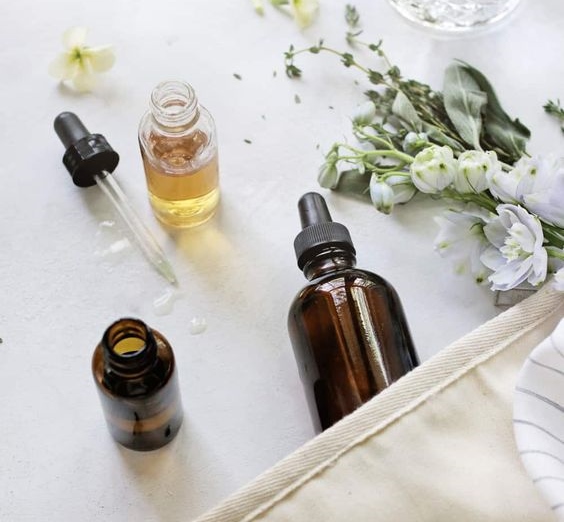I have found an excellent and informative article about using essential oils and aromatherapy to help relieve pregnancy side effects like morning sickness and stretch marks.
The article gives a good summary of research literature on their effects and research outcomes as well as some tips on how to create essential oil ‘recipes’ for labouring and postpartum mothers.
Review of the Literature
Aromatherapy in maternal health addresses the various experiences of pregnancy: morning sickness, stretch marks, varicose veins, heartburn, haemorrhoids, exhaustion, pain, nausea, sleeplessness, anxiety, maternity blues, and depression. Effects of aroma baths in the peripartum period might decrease fatigue, pain, and discomfort, in addition to facilitating perineal wound healing.
In their brief focus on maternal and child health, Maddocks-Jennings and Wilkinson (2004) mentions that their literature review discovered Imura, Misao & Ushijima (2006) chose Neroli (Citrus aurantium) and Lavender (Lavendula Officinalis) as their compound of choice with a carrier oil and used this for a prescribed massage procedure on the second postpartum day for sixteen mothers. Four standardized questionnaires were used before and after the intervention: Maternity Blues Scale, State-Trait Anxiety Inventory, Profile of Mood States, and Feeling Toward Baby Scale. They found that aromatherapy – massage might be able to assist postpartum mothers to improve physical and mental status and to facilitate mother-infant interaction.
A retrospective study by Dhany, Mitchell and Foy (2012) was conducted to explore if an aromatherapy and massage intrapartum service (AMIS) reduced the need for analgesia during labor. The seven aromatherapy oils used in labor were: Bergamot – as an analgesic, antispasmodic, helps relieve fear, and considered uplifting; individually, Jasmine, Lavender and Clary sage all have the same attributes – as an analgesic, helps relieve fear, has a calming effect, and can enhance uterine action; Frankincense – an analgesic, excellent for fear and calming, which also helps balance emotions; Peppermint – excellent for addressing nausea and enhances uterine action; Rose – occasional use for bereavement and depression, can also help enhance uterine action. The analysis showed that having an AMIS appears to have a positive impact on reducing anesthesia during labor, which, in turn, has the potential to improve maternal and neonatal outcomes.
Some Practical Tips for New Families
Here are some aromatherapy “recipes” for the laboring and postpartum mother as mentioned in Walls (2009).
Labor support massage oil.
An individualized labor massage oil can be created with the approved, preferred essential oils in a 2% to lower range 4% dilution.
Here is a suggested formula:
2 ounce carrier oil
10 drops each of lavender and clary sage essential oils
8 drops rose geranium
4 drops lemon essential oil
Store in dark amber bottle and pack in the labor supply bag.
Labor pain relief.
Jasmine or rose essential oils to assist with pain relief. These can be diffused with a diffuser or on a cottonball, or by placing 5-7 drops on a warmed rice sock, or made into a massage oil, or added to hydrotherapy (5-7 drops total).
Peppermint engorgement massage oil.
Peppermint essential oil also reduces supply. To create an oil for a gentle massage to reduce engorgement:
1 ounce carrier oil
15 drops peppermint essential oil
Massage a small amount into breasts, 2-3 times daily, only until supply normalizes.
Avoid nipple and areola area.
Infant Care.
Most experts agree no essential oils be used on the infant in the first 6 weeks, and even after very few and in small amounts.
In using aromatherapy with infants and young children, a small amount, 1 drop in 1 ounce of carrier oil is a good safety rule. (Smith, 2012).




